Monday, 25 June 2007
Distance 20 km
Duration 4 hours 0 minutes
Ascent 201 m, descent 169 m
Map 59 or 66 of the TOP100 blue series (now superseded)

Our intention today was to get to Cardet, further up the river, where there was a camping ground. It was not a long way so we slept in till 7:30, then had our third showers of the visit (just because we could), packed up and presented ourselves for breakfast in the courtyard just after 8.
It was a fresh, sunny morning and we revelled in the luxury of a proper French breakfast – a big jug of coffee, another of hot milk, a basket of croissants, bread and pains au chocolat, butter and various jams.
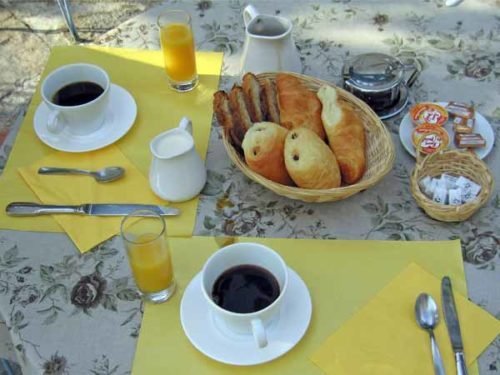
There was one other couple at breakfast, who were from Montpellier and showed the usual mixture of horror and admiration when they discovered that we were on foot.
The D124 rose steadily beside a watercourse, the Esquielle, after which the hotel is named. The country was surprisingly dry and scrubby.
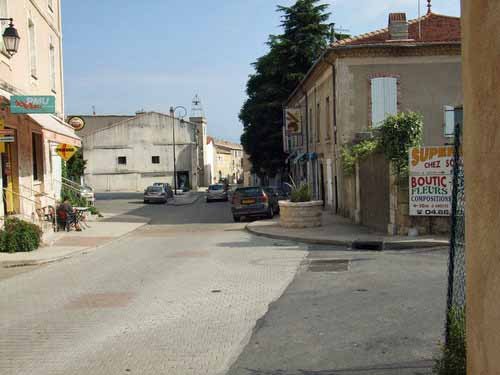
Over the rise we came to the hamlet of Mauressargues, clinging to the slope, and took the road to the right, descending steeply to the plain, close to the village where last night’s wine had been made. Crossing the D8, we pressed on towards Saint-Bénézet but turned off before reaching it in order to plunge from pine forest to fields, in the direction of Lédignan.
This little town was on the intersection of two main roads and boded well for morning coffee. When we got there, all we could find was one bar open, as it was Monday. One was all we needed, however, so we got bread and croissants nearby and settled in at a table.
An old fellow came up as we were sipping our coffee and asked where we were from. When I said Australia, he replied dismissively the we were therefore English. I said we were actually the rejects and criminals of English society, the people that England did not want, and he liked that – we were the equivalent of Réunion in French society. He shook our hands warmly as he shuffled off.
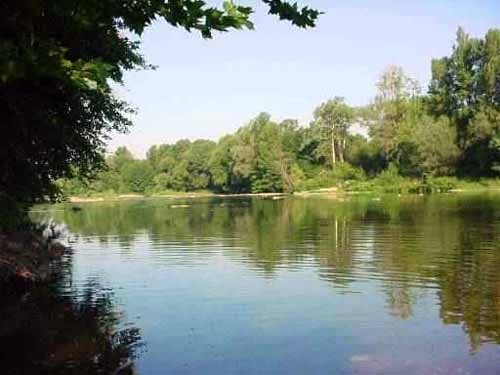
Despite closely following the map, we missed the side turn from Lédignan and had to risk our lives on the truck-infested N110 for a couple of kilometres until we found a gravel track that took us through the vines to rejoin the lost road. There we found a tree laden with ripe pears, of which we picked a hatful.
A scatter of houses at les Mas de Cardet had us searching for the way again, but we found it and were soon crossing the fields towards the river.
At this point the Gardon is known as the Gardon d’Anduze, to distinguish it from the other main tributary, the Gardon d’Alès, which comes in a bit lower down. There is also a third branch, the Gardon de Mialet, which we were to encounter the following day, and even a fourth, the Gardon de Saint-Germaine. A certain lack of imagination was evident in the naming department.
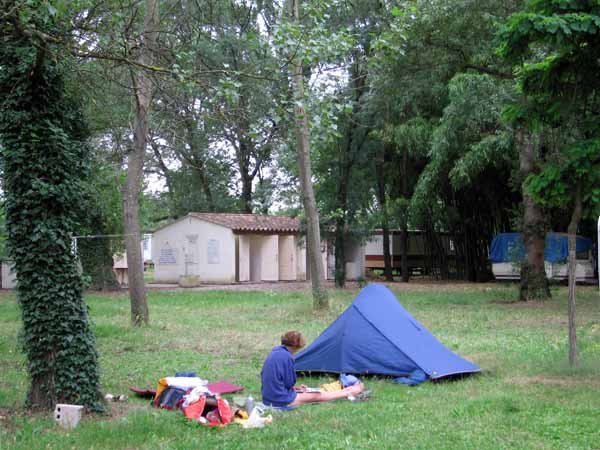
We walked along the D982 until we saw a sign to the “Chercheur d’Or” camping ground, which was a little way back along the riverbank. It turned out that Cardet was a well-known gold-panning place, where quite big nuggets had been found in the river.
The camping ground was large and sprawling, with cabins and caravans dispersed among the trees. There were plenty of people about, and the squeals of a party of children floated up from the river. School holidays had begun.
Our hostess, a burly blonde, was having lunch with friends on the terrace. She waved us away to choose a spot and when we came back to pay, she had great difficulty working out a price, but settled on €10.
On finding that we were Australian, she said that many of her customers had been to Australia in search of gold, a remarkable thing given that the French seldom travel. She also told us the restaurant would be open at 7:30.
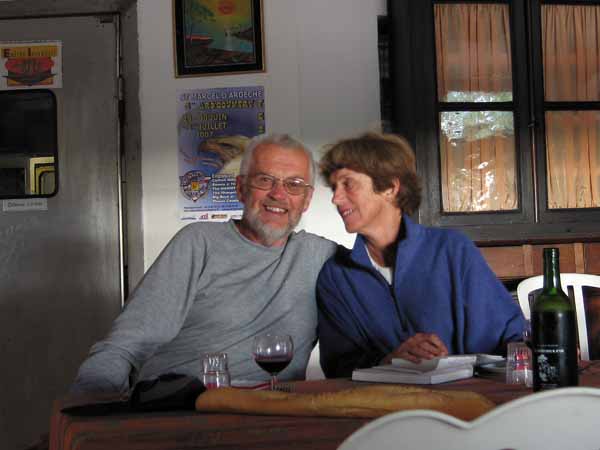
We returned at 7 o’clock for apéritifs at the bar, which turned out to be a large, empty hall, with a few drinkers leaning on the counter and a couple of hardy souls sitting outside. We joined them for lack of anywhere to sit inside, and punctually at 7:30 madame invited us in to eat.
A couple of long tables had been set up in the hall and the diners spread themselves between them. It was to be a communal meal. On our table were three middle-aged sons of toil at one end and us at the other.
The first course was melon from the village, with ham and bread and butter, during which we kept our conversations separate, but when the main dishes of steak, chips and salad arrived, we began to chat.
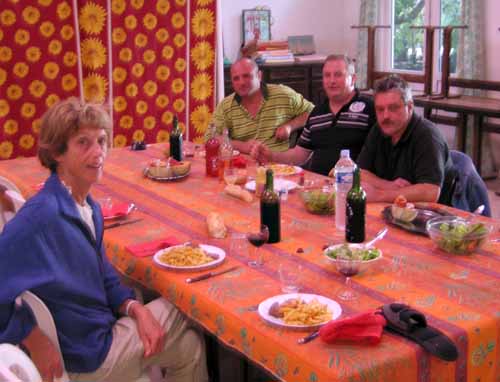
They were uneducated truck-drivers, but had become remarkably knowledgeable students of Roman history through their interest in fossicking. In France they had found many Roman coins, as well as New Zealand army buttons in the Somme. Two of them had even been to Australia, one with the French navy and the other in search of opals.
The conversation became lively. One of them showed us a card trick, and another told a joke about Sudoku – it’s easy to do, if you turn to the north, you have “le-sud-au-cou” (your bum to the south). Then I repeated my line about Australians being the unwanted scum of British society and we all rose to our feet to toast “les condannés!” (the convicts).
Keith found himself drunkenly comparing calf muscles with the brawniest of them. When it was time to go, we were presented with a Roman coin to take back to Australia – the idea of it amused them. It was a pleasure to meet these charming, enthusiastic, natural scholars.
Previous day: Uzès to St-Geniès-de-Malgoirès